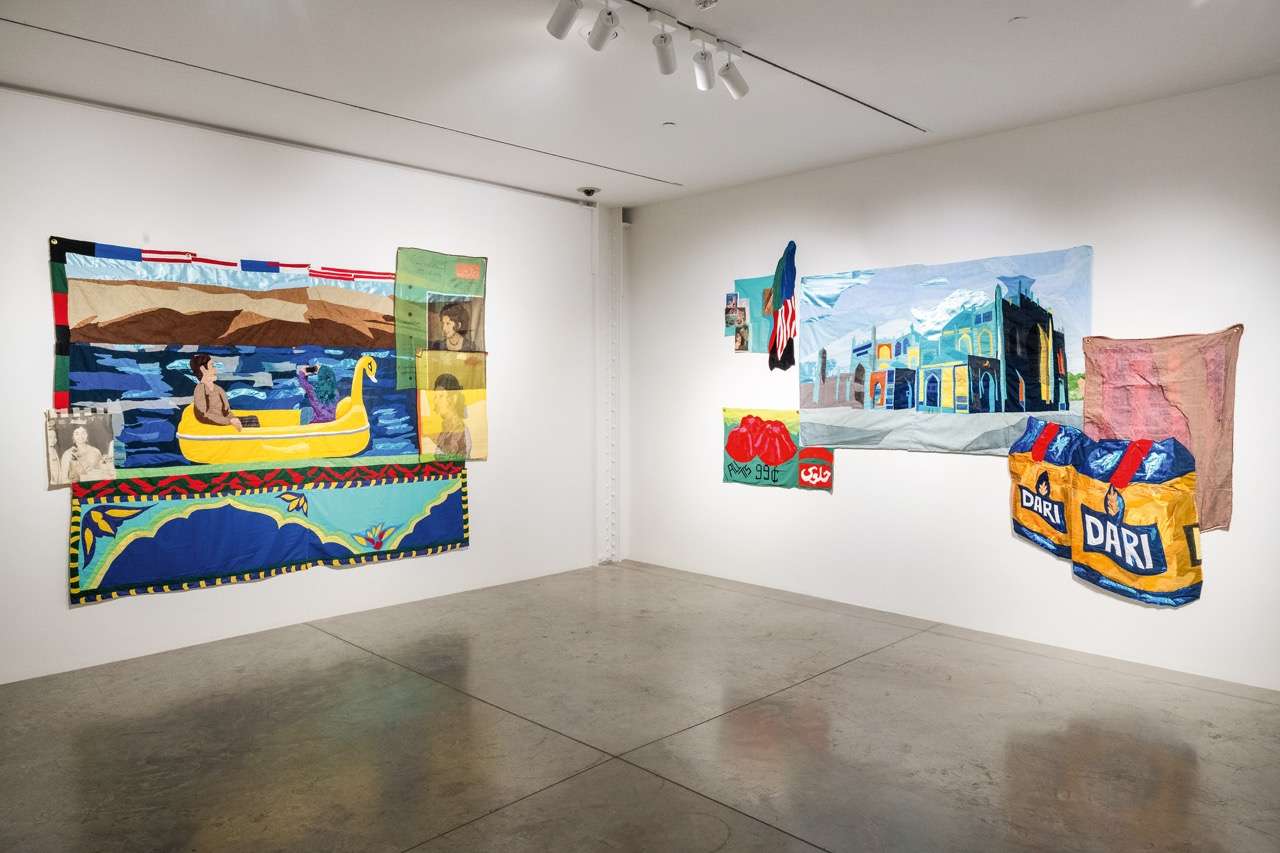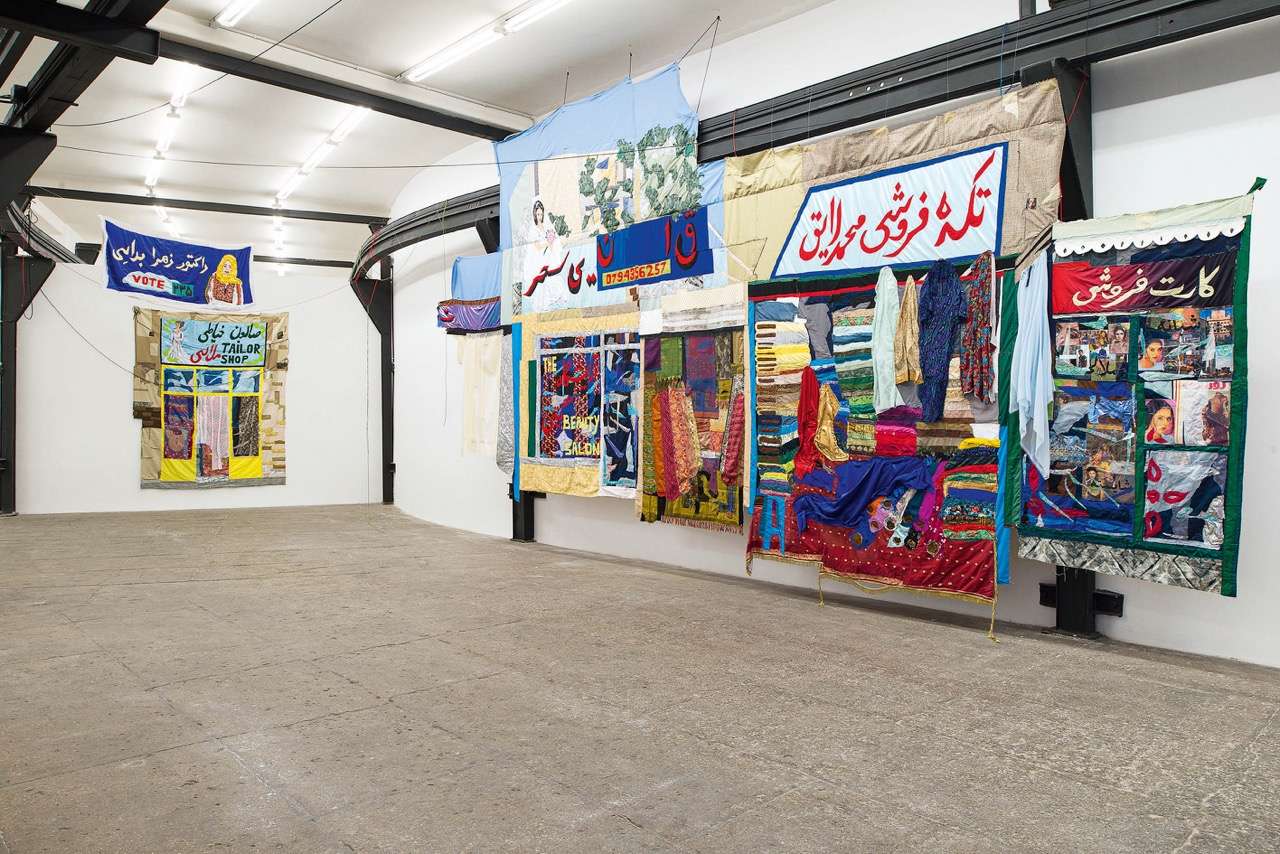
Hangama Amiri (1989, Pakistan) is a Afghan – Canadian artist, who lives and works in the USA. She left Afghanistan at the age of 7, but she continues to relate to her native country in her works, discussing issues of politics, feminism, gender and geopolitics. Her artistic practice is rooted in Afghan traditions and costumes and often deals with references to the Islamic culture in general.
Concerns and fears for Afghanistan’s future have soared in the summer of 2021, following the withdrawal of American troops and the subsequent control of the country by the Taliban government. In Spectators of a New Dawn, concluded in 2021, while expressing strong concerns for the fate of your country, you also leave room for hope. If you had to imagine a new body of work inspired by what’s happening in Afghanistan, what do you think it would be like?
It is difficult to imagine what sort of narrative my work would shape or evolve into, given that conflicts and internal tensions remain at the core of the Afghan political and social life, which I am witnessing from afar. My current body of work reflects the atrocities, the forced religious power and culture shift, focusing more on the youths’ perspective and how they would want to see Afghanistan tomorrow. All I can say is that, as a post-war generation Afghan, I was never silent about raising my voice or making my art about Afghanistan. I am continuing to support, reflect, and represent the contemporary stories and experiences I hear from my own family, friends, and colleagues who are currently still living there. I will also continue to weave the stories of Afghan women living and breathing on the verge of this conflicted society. In using the platform of arts and history, my goal is to give these women a way to occupy a space among international communities.
How did you experience this period of crisis in which the pandemic overlapped with the Afghan drama? How do you think it affected your work?
The pandemic allowed me to reflect more on myself and my own experience of living in the US. My art practice shifted because I became interested in questions revolving around home, belonging in the US context, and the everyday objects I used that were connected to Afghanistan. My solo exhibition at Cooper Cole in Toronto presented a different body of work reflecting new questions of home and memory after migration. The textile pieces reflect observations on my domestic space that open a dialogue between emotive and imaginative aspects of cultural memory, touching on feelings of loneliness, isolation, love, intimacy, and longing.
Silk, muslin, satin, chiffon, embroidered fabrics: these are just a few of the materials that compose your works, apart from canvas. How much has the bazaar culture migrated into your work and what is the message you intend to convey by employing these textiles, which are so connected to your country of origin?
The influence of the open-air bazaar on my work has to do with how Afghan communities connect and engage with the exchange value of the goods they consume and produce. I was interested in questioning how products, exotic objects and other goods have themselves migrated outside of the context of the bazaar. As a young child growing up around bazaars in Kabul, I was fascinated by, and keenly observed the textiles from Pakistan, the beautiful local hand-made embroidery of Afghan attires, and the complex patterns and decorative colours of Indian saris. In the end, as a flâneuse in Afghanistan, I found myself in a melting pot of different cultures that was made up from Afghanistan’s various neighbouring countries. That is what makes bazaars in Afghanistan so rich, loud, and festive. I was interested in using the bazaar as a notion of diversity in my textile pieces, to express my understanding of the different demographics, geographies, and cultures that I grew up with as a refugee. Combining these fragments of different textiles brought me closer to a better understanding of my own immigration history and identity.
You have lived as a migrant for a large part of your life. What is your definition of home and how important is it for an artist to relate to a real or imaginary space they can call their homeland?
My definition of “home” is more related to memory, feelings and the imaginary, rather than a specific territory or its physical being. No matter how far I have lived from Afghanistan, I have never stopped thinking, seeking, or learning about it. Knowing my origin as an immigrant has given me the opportunity to revisit my current and childhood memories and find a way to build upon those fragile memories through art. Living in a globalized world has also meant that I can now more quickly connect and fulfil my need to be home in different ways, like video calling cousins and aunts or purchasing a specific brand of rice. I found that one does not necessarily need to go to their home country in order to experience certain cultural experiences, and I have realized that it is possible to find that slight sense of locality or home among local diasporic communities.




























